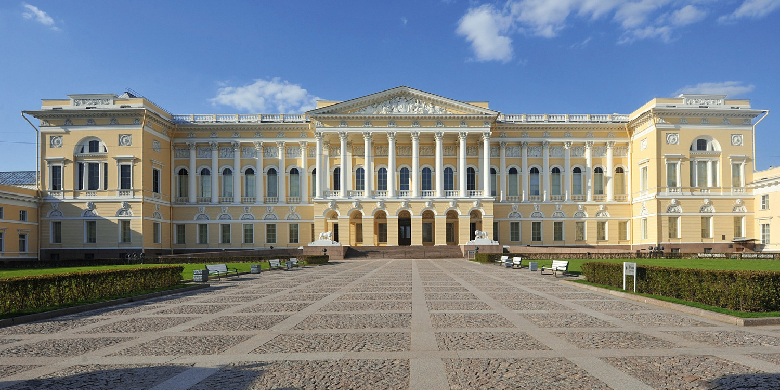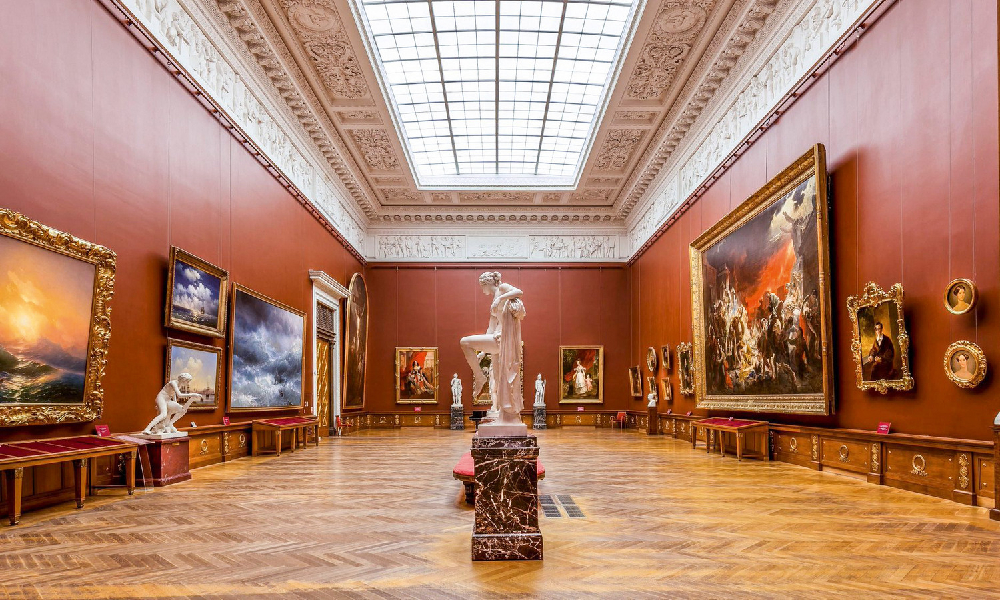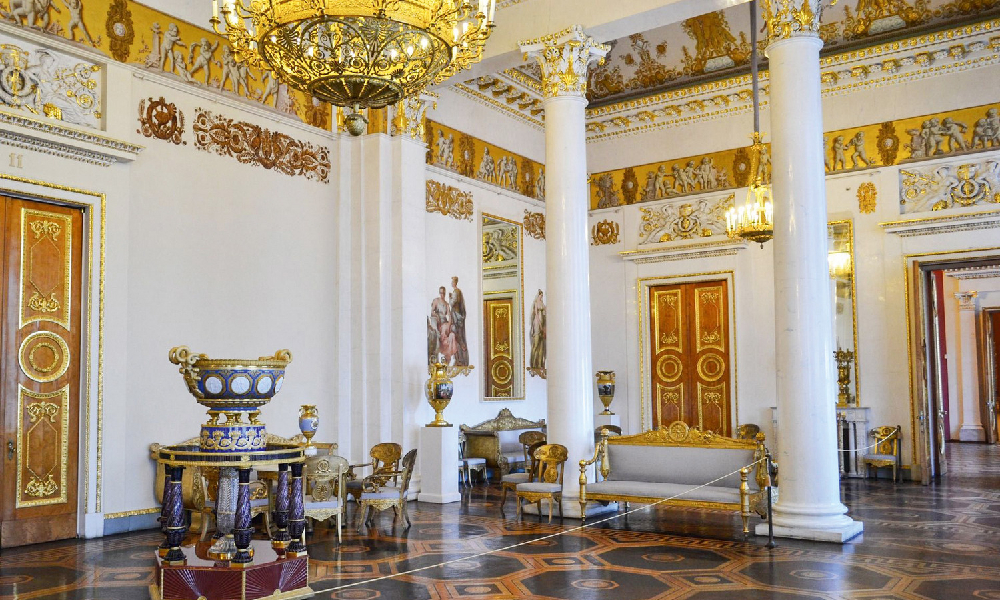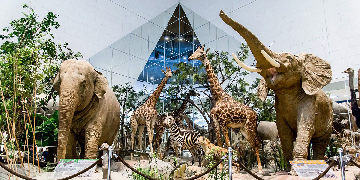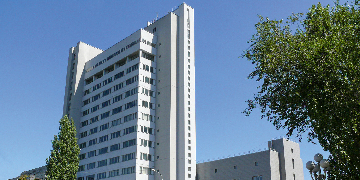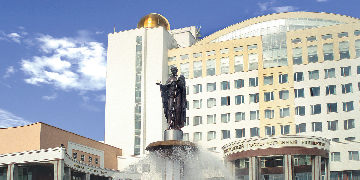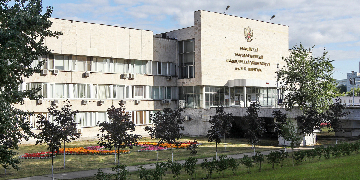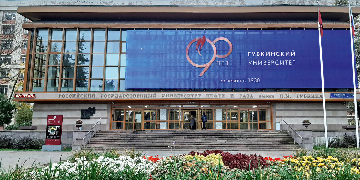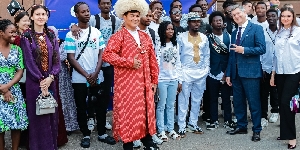The Russian Museum is the world’s largest museum of Russian art, a unique architectural and artistic complex in the historic center of Saint Petersburg.
Russia’s first state museum of Russian fine arts was established in 1898 by order of Emperor Nickolas II. To organize exhibitions and collections, the museum was given the Mikhailovsky Palace with the adjacent areas and buildings such as the side wings and garden.
The Russian Museum collection was made up of the objects and works of art handed over from the Winter, Gatchina and Alexander Palaces, the Academy of Arts, and the Hermitage. A good part of the museum collection consisted of the exhibits donated by the private individuals.
Today the museum collection consists of more than 440,000 exhibits and covers all historic periods and trends in the development of Russian art, main arts and genres, movements and schools over more than 1,000 years.
Today the total museum area is more than 30 ha. The museum complex comprises:
- Mikhailovsky Palace, one of the most beautiful buildings in Saint Petersburg, was erected according to the project of famous architect Carlo Rossi in 1819-1825. The palace was rebuilt to meet the Russian Museum’s needs. Today it displays an essential part of the exhibition.
- Benois Building was built in 1914-1919 as a pavilion to organize the artistic associations and unions’ exhibitions. It locates the permanent exhibitions of the art of the end of the 19th century – the beginning of the 21st century.
- Stroganov Palace – a witness to numerous historic events – was built in 1753-1754 by architect Francesco Rastrelli. Today in the halls of this architectural masterpiece you can see the original interiors and admire the richest collection of objects and works of art.
- Mikhailovsky Castle – the largest architectural monument in Petersburg of the 18th century built by order of Emperor Paul I has been a part of the Russian Museum complex since 1991.
- Mikhailovsky Castle Pavilions constitute an impressive architectural ensemble with the castle building. In the museum pavilions, you can attend online lectures and visit multimedia exhibitions. It has the Coordination Center of the Russian Museum: Virtual Branch project.
- The Marble Palace – a unique Russian architectural monument of the 18th century in a fine state of preservation– is located at the Palace Embankment of the Neva River. The palace has the permanent exhibitions of Saint Petersburg and German collectors.
- Summer Garden –Emperor Peter I’s favorite garden – had been the center of court and social life for most of its history. The picturesque garden is open to the public all year round.
- Peter I’s Summer Palace is one of the few historic buildings that were not destined to be rebuilt. You can visit the palace from May to September.
- Peter I’s House – Peter I’s wooden house at the Petrograd Side – is a unique architectural monument and the oldest building in Saint Petersburg. The original exhibition is represented by the objects of the time of Peter I.
- Mikhailovsky Garden – a rare landmark of landscape architecture of the 18th century – the first third of the 19th century – combines the French and English styles. The garden visitors can go on tours, attend theater performances, festivals and concerts on a regular basis.
State-of-the-art technologies have made the treasures of the Russian Museum closer and more accessible. The museum’s virtual branch allows art lovers from all over the world to take a walk around the museum halls and get acquainted with a part of the Russian art collection.
rusmuseum.ru
The Virtual Russian Museum
